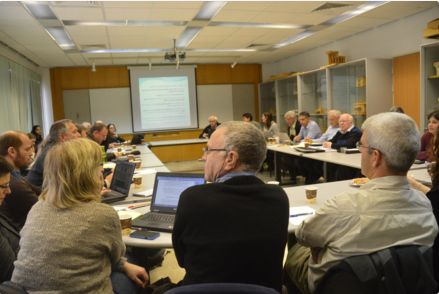Participatory Planning
The Israel Marine Plan’s basic approach emphasizes that the marine space is essentially (ultimately) public. It aspires to view the different interests of all the stakeholders fairly and guarantee the provision of its ecosystem services over time. Through its goals, the plan offers way for informed and responsible management of the sea, applying an overall ecological approach. It aims to develop marine knowledge, to improve public awareness of what exists in the marine space, and to shape the way it is depicted spatially.
Stakeholders are actively involved in the planning process and accompanied by local and international professional scientific advisory committees. The planning process is supported by the use of the interactive GIS tool that helps to visualize resource use, potential conflicts, and management scenarios and thus enables comprehensive planning.
1) Time needed to showcase and use the tool
2) Enthusiasm by those involved
3) Public relations for use of the tool (i.e., mentioning it at every opportunity, etc.)
Lack of support among the core-team staff was a problem. Diversity of members on the team should be maintained (i.e., background, age, expertise, etc.). Time is crucial so that efforts are not rushed and full professionalism is maintained, especially for the compatibility matrices. This "solution" will not be appropriate in all situations; it depends on the level of funding, use of the internet and digital tools among the general population. After we started developing the tool we discovered that other organizations/entities had similar tools available. We could have tapped into these to avoid redundancy & improve base data. It would have been helpful to tie the information from the compatibility matrices to the ASDA tool so that one could see the compatibility and/or conflict found each areas as competing uses are selected. Monitoring usage of the tool would have been very helpful. High usage (and diverse usage) would generate more support for tool development and promotion.
